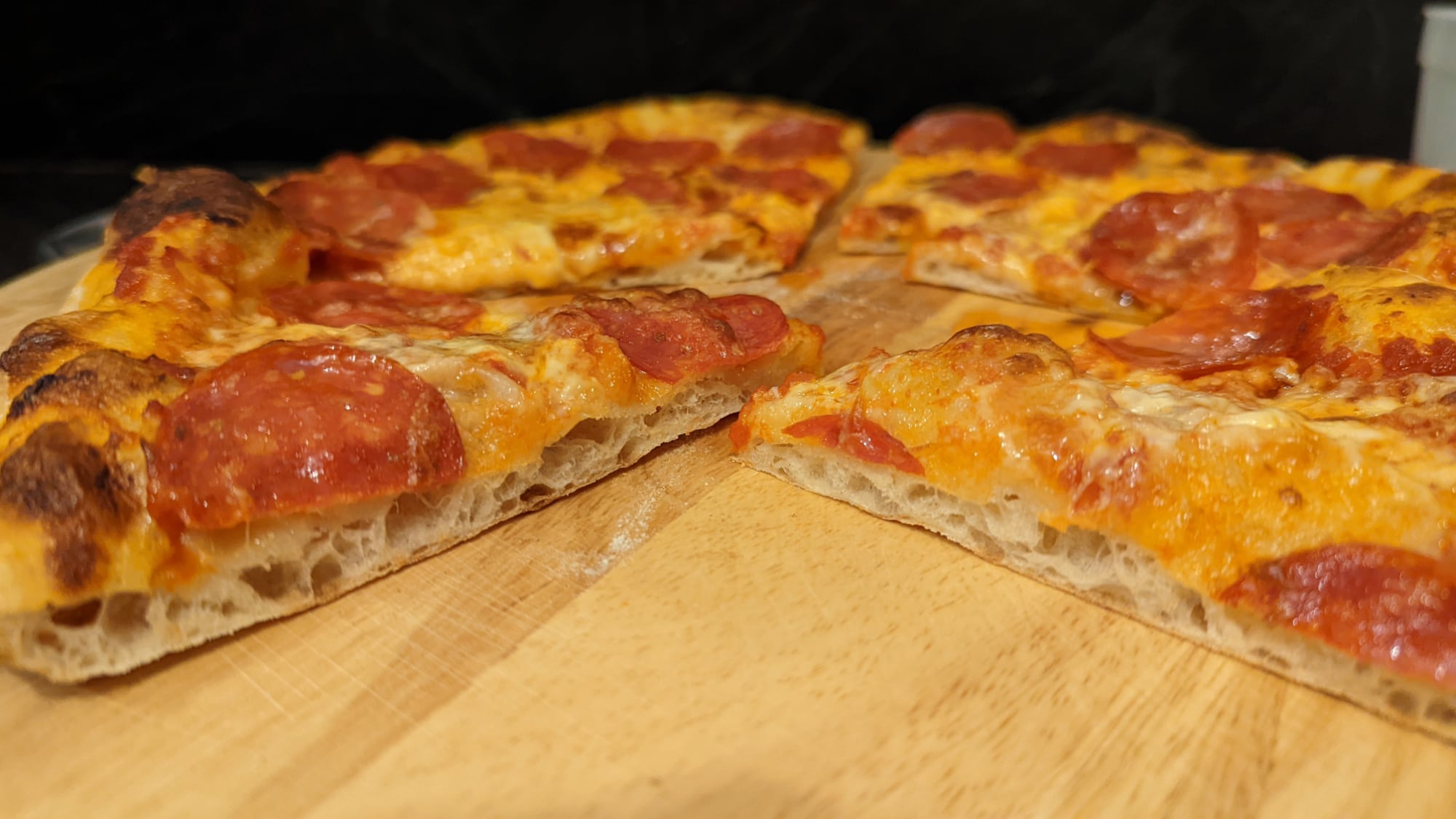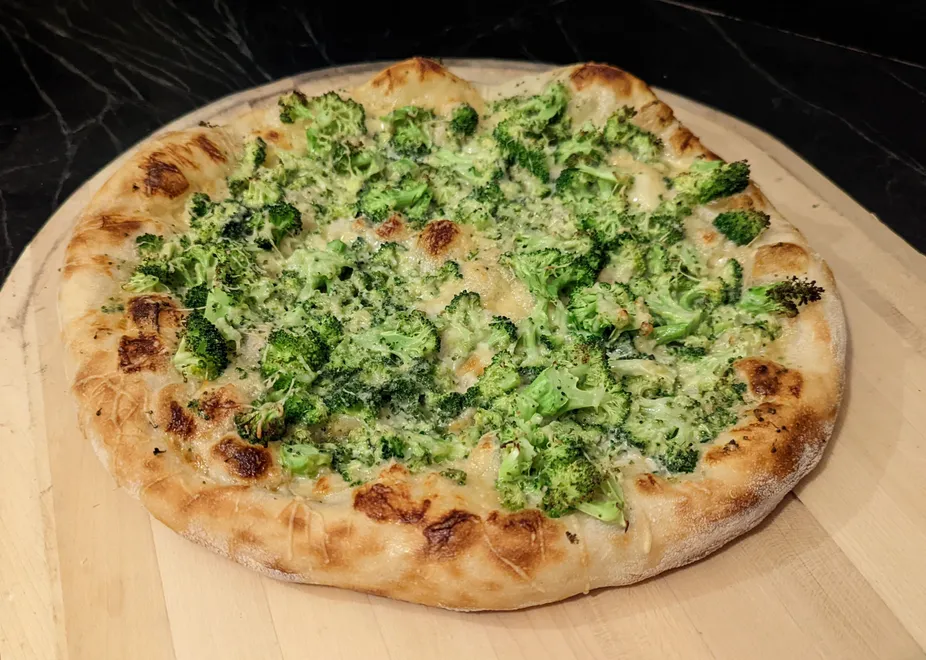
Pizza Upgrade: Stone to Steel
I’ve had baking stones of various kinds for fifteen years or so. For pizza, our old, less efficient oven did pretty well with a stone at 550°F, but the new, significantly more expensive one struggles to keep it that hot. My guess is that in order to meet efficiency or safety standards, the new oven uses much less powerful heating elements. It takes longer to preheat to a high temperature and really can’t maintain it when the door is being opened on a regular basis, as it is when baking multiple pizzas.
Unwilling to accept a pizza regression and not ready to start building an outdoor pizza oven (yet), the best option was the baking steel.
The main difference is in the bottom of the crust. It’s less likely to be soggy, even with a lot of wet ingredients, and it develops nice dark spots like you would expect from a proper pizza oven.

The drawback has been that the cook time and evenness decreases with each additional pizza baked in succession. The first one will sometimes cook a little too fast on the bottom. Then subsequent will take longer and longer and won’t develop the same dark spots. Hitting the steel with the broiler for a couple minutes between pizzas and letting the oven reheat to 550°F helps, but extends the total cook time by a lot when making a bunch of pizzas.

Still, it’s a huge improvement over the stone in this new oven. The time to let the oven and steel come back up to temperature is offset somewhat by the faster actual cook time. And the crust is significantly better.